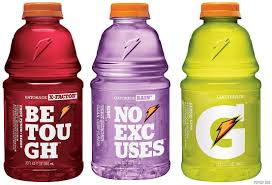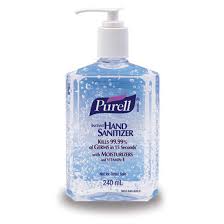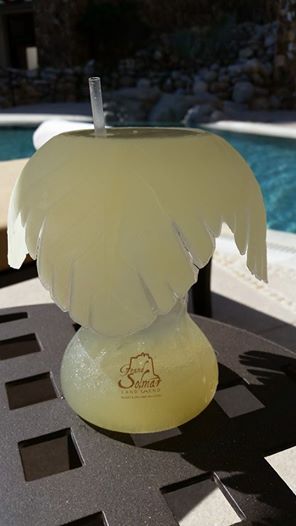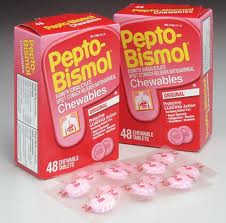Getting Sick In Mexico or Anywhere
It is called “traveler’s diarrhea” and there are a number of other names for it (tourista, Montezuma’s revenge, trots). And it happens when you are on vacation – like going to Mexico for some sun and fun, or almost anywhere in the third world.
Most likely from contaminated food. Usually bacterial in origin, but could be a virus or a parasite. Most people blame the water- but typically it is the food.
How it Starts – and What To Do:
It starts with the stomach rumbling a bit. You might notice a bit of acid reflux, queasy, and some nausea. You know something bad is coming. But you are on vacation, you want to deny it. You think you can hold those cheeks together the bowels will not explode and swallow hard you will not vomit. When you feel this – it is time to move back to your hotel room. Before you go here are some supplies you might want some people to get for you (I recommend you travel with these):
Pepto-bismol if you can take it.
Some wipes for your behind.
Gatorade or Pedialyte

Somehow the motivations on the bottles…
Do not fight the nausea. You will not win. Let it go – if your body wants to get rid of the toxins in your stomach, the faster you get rid of them the faster you will recover. The body stops the stomach from emptying when it detects an infection in the stomach. The longer you avoid vomiting the longer it takes for your body to recover. The longer you hold off on vomiting your stomach will accumulate more acid, more gas, become more bloated, and you will feel worse. Let it go. By the way – you may need a bucket too, because diarrhea will start shortly.
Your body will fight this – you will have muscle aches, get hot, get cold- might have a mild fever. Pepto-bismol will help this also – so after you have vomited it is the time to start to take the medication.
You are going to not feel well the first 24 hours, but after that you will be well enough to get out of the room. Traveler’s diarrhea is defined as 2 more more lose stools in a 24 hour period (average is 5 stools per day), and is often accompanied by stomach cramps, nausea, and vomiting. Typically develops on 3rd or 4th day of a trip. Lasts 3-4 days if untreated, but with treatment resolves in 1-3 days (it can last longer, but 98% are cured by a month).
Plan on spending the first 24 hours indoors. Share misery on Facebook or Twitter, avoid going out – read your novels, watch television. Keep drinking water, or Gatorade or Pedialyte, and remaining hydrated. But when you drink you should take sips at first – don’t chug. Gatorade is good because it helps to rehydrate plus has some glucose that you need to replenish your glycogen stores (your body’s quick fuel source).
Smoking increases the nicotine receptors of the stomach – and makes most people feel worse – with some limited exceptions. For some, a cigar will calm things down a bit. So be selective. The cigar will actually calm things a bit- especially if you are a cigar smoker. If you are not – don’t try this.
Prevention
Stomach acid kills most bacteria and viruses – so if you are taking a pill to reduce or eliminate stomach acid (omeprazole, protonix, prevacid, etc) you are at a much higher risk of getting sick. So if you don’t need those medications – it might be time to stop them before the vacation allowing your natural stomach acid to help you out.
Frequent hand washing, or bring some alcohol based disinfectants like Purell. There are a number of handy wipes you can take with you when you are out and about. Use them before you put anything into your mouth (or nose or wipe your eyes).

Hand sanitizer is useful. The main ingredient here is ethyl alcohol (62%). You can also get wipes, which I highly recommend for travel about. This is one of the best things you can do to prevent the issue (pun intended)
The majority of times the bacteria comes from food- not from water. It seems that you hear a lot about “drinking water” but it is often traced to a food borne illness. There are some restaurants that have good technique- where you can look into the kitchen and see the food being made. But also know that even in the best of circumstances a great restaurant can pass on disease. There are a few givens: avoid fruit and vegetables that cannot be peeled. Raw food can be problematic, pick and choose carefully.
Avoid Buffets. There are a lot of these around – you want made-to-order foods.
It is important to keep a journal of where and what you ate. This will help determine when and what you ate that might have caused the problem. It typically takes several days before you become ill- so it probably wasn’t the last place you ate. Many people blame the last meal – and that can be the cause, but it usually takes the bacteria a few days to grow in your colon.
Water should be boiled, or treated. There are a number of resorts that filter their water, or treat it, or both. So your resort may be just fine to drink water, but the restaurant down the street may not use the same water source.
Ice Cubes can contain bacteria. Bad water equals bad ice. Alcohol does not kill bacteria in ice cubes (an old myth) – so be careful that if you won’t drink the water, don’t use the ice.

If the water in your resort is good, then enjoy the shaved ice and the local drinks with ice cubes. If you are unsure about the water or the ice then order something bottled- like beer.
Treatment
Rehydration is important. Which is why most physicians recommend Gatorade or Pedialyte. Children become dehydrated faster than adults – so keeping on top of them is important. Popcycles may help.
Pepto-Bismol is standard therapy. Two tablets or two ounces four times a day. NOTE: this contains an aspirin derivative and should not be combined with aspirin products or used by people who have aspirin sensitivity. Side effects: ringing in the ears (you had too much), black stools, tongue can get black. It can interfere with some antibiotics like doxycycline and malaria drugs.

The standard treatment for traveler’s diarrhea
Kaopectate solidifies the stools but does not decrease numbers of them. This also gives you a bit of time to get to a toilet – and safety.
Lomotil and Imodium slow bowel function and reduce cramps and nausea. But they can also keep the bad stuff in – so may prolong illness. DO NOT USE if you have blood or mucous in the stools.
Antibiotics: many bugs are resistant because so many people over-treated with antibiotics. They can also cause superinfection with yeast.
The idea of probiotics is a good one, but has never been proven to work in this case, and most probiotics in most yogurts are not helpful. We did articles about probiotics: Probiotics: the lipstick stained glass.
